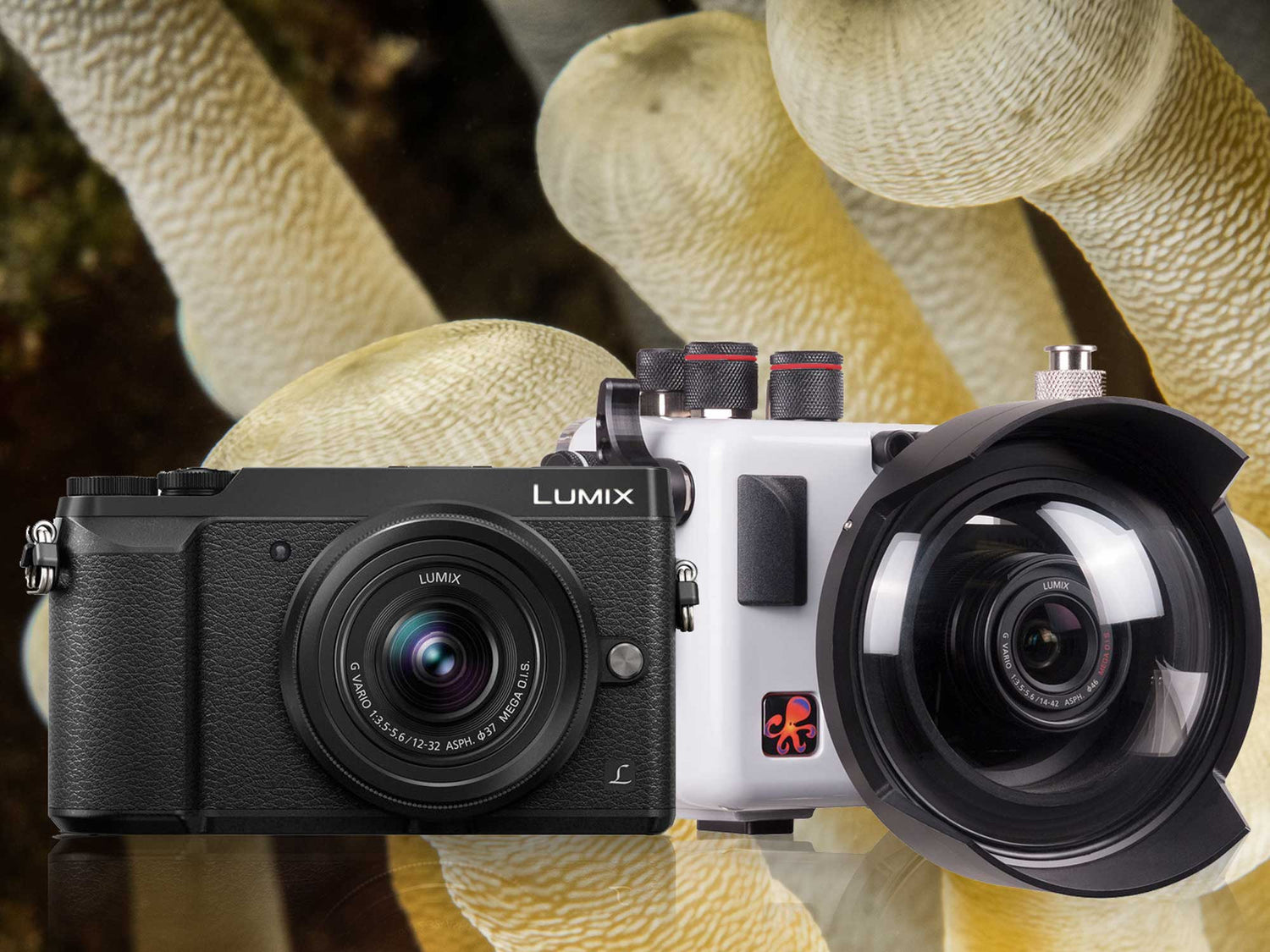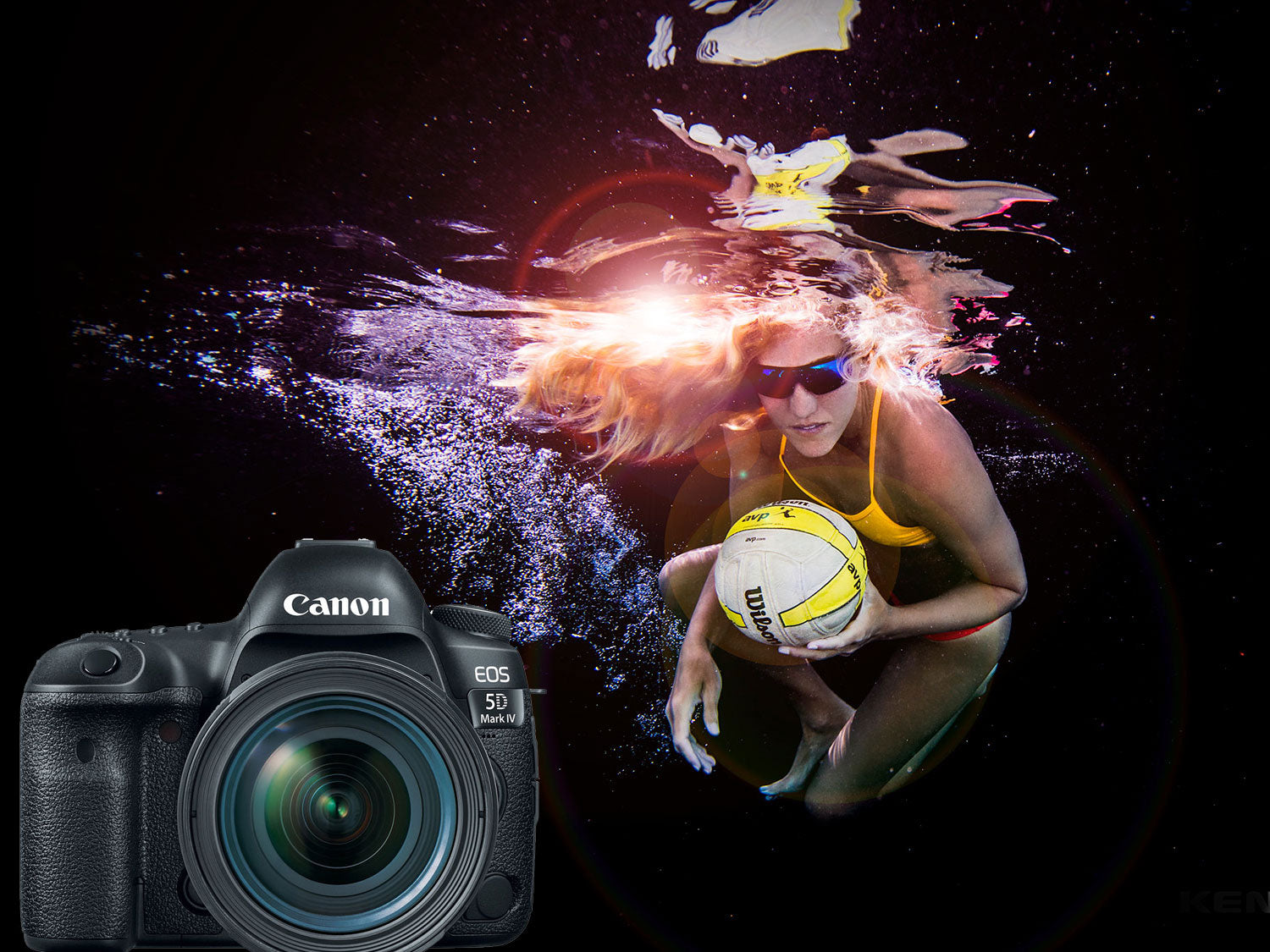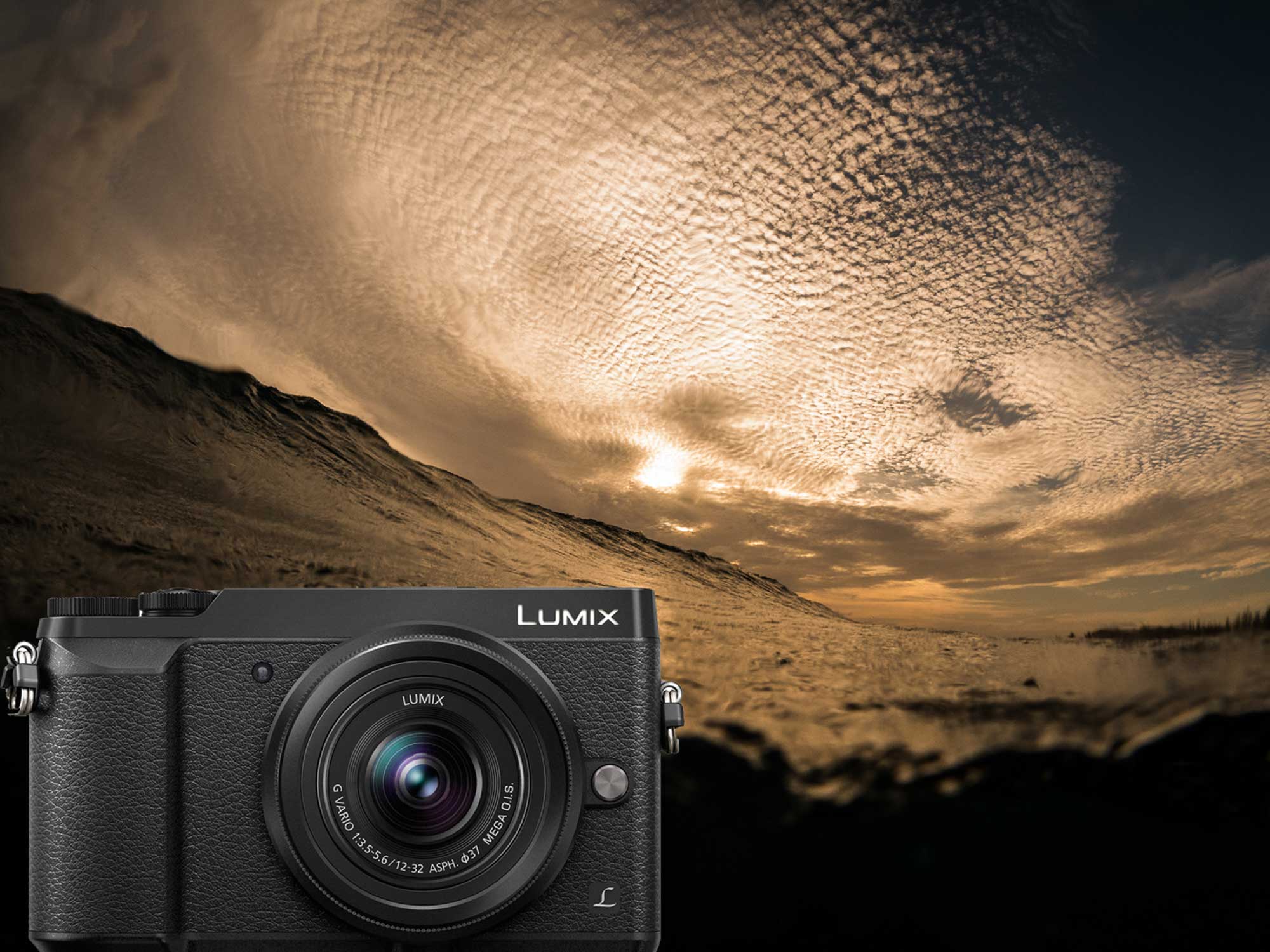Review and photos by Chase Darnell.
With any underwater shooter from the hobbyist, professional, or even a beginner there is a want to produce your next best image or put together your latest video content in a highlight reel in order to show yourself and others the progression of your craft.
Progression is affected by time in the water, conditions, marine life encounters and countless other factors that bring different encounters, experiences, or events in front of your lens to capture. Another aspect to bring up is your setup and what it is capable of. Until recent years I did feel there was a gap between prosumer and professional camera bodies with the specs an underwater shooter needs. For most of the options for professional grade still and video abilities was very high and created the need for a big investment.
With the crazy advances in mirrorless interchangeable lens cameras, there are now an array of cameras that are packed with features that truly cater to an advanced shooter. These setups are smaller, more affordable and in the video realm are making the biggest push forward with solid internal 4K recording which is a huge advantage if you are a dual shooter.
I have recently spent some time in the water with Panasonic’s GX85 Mirrorless Micro Fourth Thirds Camera in the new all around dive/water housing from Ikelite. The camera boasts many impressive features that I mentioned above and is backed with a solid line up of lenses that work great for all types of water photography.
With the help of Ikelite I was able to gear up for a plethora of different shooting environments with multiple lens and port options to be sure I had the equipment for the job.

Overview of the Panasonic GX85
The GX85 is a new camera in the Panasonic Mirrorless Micro Four Thirds lineup. The camera has a 16MP Four Thirds CMOS sensor and a new anti-aliasing filter that should produce very detailed final images. The camera also offers internal 4K video recording at 30/24 fps backed by an impressive 100Mbps rate for a very detailed final video output.
The GX85 captures images a 10fps with AF-S focusing and showed quick focusing capabilities with its 49 contrast detection autofocus points. The camera also has a nice ISO Sensitivity when in extended mode ISO 100-25600 which enables for better images in low-light situations.
PRODUCT HIGHLIGHTS
- 16MP Live MOS Sensor
- Micro Four Thirds System
- 76m-Dot 0.7x Electronic Viewfinder
- 0" 1.04m-Dot Tilting Touchscreen LCD
- UHD 4K Video Recording at 30/24 fps
- Built-In Wi-Fi Connectivity
- ISO 25600 and 10 fps Shooting with AF-S
- DFD AF System, 4K Photo Modes
- 5-Axis Image Stabilization, Dual I.S.
- Lumix G Vario 12-32mm f/3.5-5.6 Lens

Overview of the Ikelite Housing for the Panasonic LUMIX GX85
Ikelite’s latest housings are designed for not only scuba type situations. They have developed the new housings to appeal to all types of water shooters. Whether your looking to get your camera into the waves for a sunset session, the pool for a fashion shoot, or capture your next best encounter while free diving this housing line has something to meet your needs.
The Ikelite Housing for the GX85 keeps the rig very compact, lightweight and allows the user full access to the many custom controls offered by the Panasonic GX85. The new housings are made with a ABS-PC blend that provides added strength, decreased weight and a corrosion-free performance with minimal maintenance.
The housing gives you the option to either use Ikelite’s bulkhead connection for true TTL exposure communication, or to slave off of the cameras built-in flash for fiber-optic connection strobes if that’s what you have in the gear bag. The camera’s built-in flash does not however have the ability to be used for lighting an underwater shot, it is suitable for triggering an external light source only.
This all seems like a great housing packed with a multitude of new specifications, but there is actually one more new addition that takes this housing to the next level. Ikelite’s optional vacuum system allows you to check the seal for your rig before jumping into the water. This is a very nice addition to give the user some awesome peace of mind when preparing the equipment.
Ikelite Housing for Panasonic LUMIX GX85 Highlights
- 200 ft (60m) depth rating
- Controls for all important camera functions; control not provided for Diopter adjustment dial
- Ikelite flash bulkhead connector with built-in TTL circuitry
- Two 1/4-20 threaded tray mounts with 3" (76mm) spacing
- Slightly negative buoyancy in fresh water; actual buoyancy varies depending on choice of lens and port
- 2.9 lb (1315 g) not including port
- 5.9 x 7.5 x 5.3" (150 x 191 x 135 mm)
- ABS-PC, acrylic, and acetyl construction

Ikelite GX85 Housing in Use
I put the housing through the steps with some diving, surf, kitesurf, mangrove, and free diving photography environments and it proved to provide a very nice shooting experience in all of the above areas.
The housing keeps the rig small. With the wide variety of lenses available for this camera, Ikelite has all situations supported with an array of ports, domes, and accessories to gear your setup to your desired shooting situation.
All controls are very well marked and easy to use. Your shooting settings are allocated to two different control dials. One is positioned on top of the housing and the other on the back just above your arrow key and menu controls. The GX85 is crazy customizable so you have the ability to choose which dial will control which setting.
Further along with the customization point, the GX85 has three custom function buttons (Fn1, Fn2, Fn3) each of which can be assigned to a variety of different menu and settings options allowing for quick access to your most important settings.
My setup for these function buttons varied a bit depending on shooting video or stills. While shooting stills one function button was always set to give quick access for ISO adjustment, another function remained on white-balance (WB) adjustments and the last I switched between either “Shooting Mode or “Focusing Mode”. Another adjustment I made for still shooting was to remove the focusing function from the shutter altogether and set the focusing ability to the AF/AE Lock button of the back of the camera. This gave the rig a true DSLR shooting feel, allowing focus to be controlled with your right thumb and ensuring when you press your pointer finger on the shutter there was no delay in snapping your scene.

The vacuum seal check was very easy to use and wow did it give me another level of confidence when preparing to enter that water. Prior to completing the setup of your housing you simply plug in the vacuum to the valve on the housing, pump the handle until you have reached around 10 in Hg and then let the housing sit for 5-10 minutes. If the pressure hasn’t dropped you housing has a successful seal and is ready to get wet.
Strobe Connectivity of the Ikelite Housing
The Panasonic GX85 Housing does offer a pop-up flash, which some strobe manufacturers use for their strobe connectivity so Ikelite provided an additional strobe connection for these fiber-optic type connections. The housing also offers a bulkhead connection for built-in true TTL exposure circuitry with the use of Ikelite Strobes. The TTL exposure is a huge advantage when housing your rig with Ikelite gear. In those quick unexpected encounters its nice to know your strobes and camera are working with you to get you the best exposure possible.
I was very pleased with the results of the TTL exposure using my two DS161 strobes. In almost all situations the TTL adjustment was spot on and helped create great exposures in even the quickest shooting situations.
The strobes also worked well with the system when run in manual mode. When photographing in a low-light situation or when working on a close-focus type wide-angle shot, I found it very helpful to tune down the power of my strobes to provide an even better exposure. Also when wanting to utilize the speed of the GX85 setting the strobes to low power enables for a quick recharge and quicker fire from your strobe for the next shot.
Wide Angle Photography with the Panasonic GX85
For my wide-angle shooting with the GX85 I used two lenses: the Panasonic 8mm and Panasonic 7-14mm. With these lenses I used both the 6" and 8" diameter Ikelite domes. For lighting I was using two Ikelite DS161 Strobes with both the use of TTL and manual exposure.
The Panasonic 8mm proved to be an awesome lens especially for the subject life we encounter here in Grand Cayman. This gives you a ridiculously wide field of view. Perfect for getting up close to friendly turtles and large sponges to ensure good exposures while still keeping your subject in the frame.
The 8mm produced crisp images and showed great retention of detail especially in the corners of the image. The lens gave the setup a true fish-eye field of view and creates a need to get close to your subject.

The lens showed very fast focusing capabilities even in high-contrast situations such as shooting into the sun. For my wide angle shooting I used both the AFS (Auto Focus Single) and AFF (Auto Focus Flexible) modes.
The AFS focusing mode worked well for large reefscape images. In this mode with the focusing action assigned to the AF/AE Lock button on the rear of the camera. You achieve a single focus point with press of the AF/AE button and that will remain your point of focus until you press it again. This lets your camera keep the same focus point as you are free to pull the shutter at will. Worked great for situations when composing a reefscape scene of a large coral head and working to get the best consistency of fish life around it.

By achieving a single focus point you can remain in the same position and don’t have to worry about your camera trying to achieve focus on the moving elements of your scene.
This was also my preferred focusing mode for over under images. By achieving your single focus point you are free to dunk and pull the shutter repeatedly without the camera having the ability to refocus on the water line or stray bubbles.

The AFF focusing mode proved to work well with subjects that are generally on the move. Turtles, Eagle Rays and Stingrays are generally moving through the water column. With this focusing mode I still left the focusing function assigned to the AF/AE button. Once pressed the camera will automatically adjust as the subject moves. This worked great for an approaching animal scenario. You are waiting for the right fin position or for the subject to get to the optimum distance to capture your shot, you press your focus button and the focus point remains on the subject as it moves throughout your frame.
Wide-angle photography with the Panasonic 7-14mm
The focal length of the 7-14mm is a very useful and versatile lens especially in the realm of underwater photography. It offers both a super-wide curved fisheye appearance as well as a more rectilinear length that serves as more of a mid-range wide angle length. So with one lens you are able to snap a large reef life scene or have the option to get a bit more distance if there is a chance to see larger life in your area such as sharks and eagle rays.

When shooting the lens at 7mm there was a little blurring in the corners, but when shot at 8 or 9 mm this issue was resolved.
For a couple of dives I was aiming to document Eagle Rays swimming and feeding in the sand flats. For this situation I knew my subject would be keeping its distance so a little more reach in the focal length of my lens would help me keep my distance but still achieve a nice subject filled final image. When shooting at 14mm the lens showed quick focusing capabilities and very detailed final images.

Overall the GX85 performed very well in the wide-angle category. With great lens options with focal lengths appropriate for the underwater realm, extremely quick focusing capabilities, and the support of TTL exposure it was a very rewarding process of creating images even on the first dive with the setup.
Macro Photography with the Panasonic GX85
For my macro shooting with the GX85, I used the Olympus 60mm macro lens, which provides a very versatile macro rig. This focal length proved to handle a spectrum of subject matter from fish portraits down to the smallest blennies.

Even when put into a super-macro scenario I felt the lens did a great job of producing images with a great reproduction rate able of showing tiny subjects in a big way.
The lens proved to focus quick on both moving and still subjects. When shooting in a low light situation the focus speed was greatly improved with the use of a focus light. For my macro shooting I chose the AFS focusing mode still assigned to the AF/AE button. This worked especially well for stationary subjects with small movements.
When you have seen a subject make a sudden movement you can achieve focus and leave it locked on the same point. This lets you focus on the behavior you are trying to document and all you have to do is fire the shutter at the right moment.

Even when dealing with a macro subject on the move, I found the AFS focusing mode still worked well. The camera was very quick to focus on the subject even when having to refocus multiple times for quick reposition. For subjects like Slender File Fish, they are always on the move and always finding something to hind behind. The GX85 was able to obtain focus and capture very quickly when the subject was in the right position.
The lens and camera combo proved to provide very detailed macro images with a great depth when shot at a high aperture. It also showed abilities to focus at low or open apertures for bokeh style shots. With the low aperture the working focusing distance is very small, so a steady hand and quick shutter finger proved very handy.

Versatility When Shooting Macro
With the use of an interchangeable lens setup you can become locked into one form of subject matter due to lens choice. It’s always nice to know that even if you are setup for a critter dive you still have some ability to capture a wide angle type scene if something amazing happens.
The Olympus 60mm proved to work well in this type of situation. With a rather short focal length for a macro lens you are able to still get close enough to a bigger subject and still capture them in the frame and effectively get lighting to your subject.

Though I had to boost the ISO a bit higher than a normal wide-angle image the final images still have great detail and show the ability to capture a chance wide-angle encounter with your macro rig.
Additional Reading
Panasonic LUMIX GX85 Underwater Photos













